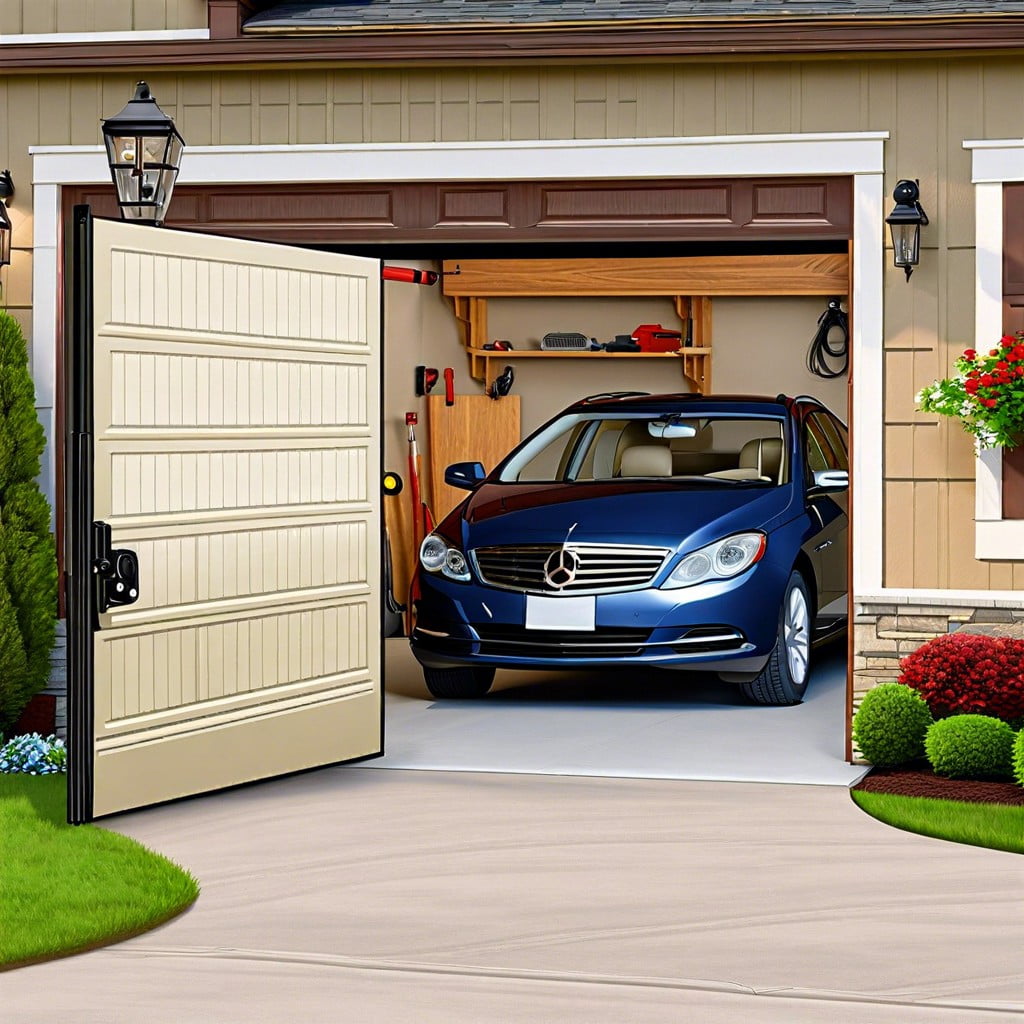Learn how to maintain your garage door effectively to maximize its lifespan and ensure smooth operation.
Key takeaways:
- Observe the garage door’s movement and listen for any strange noises.
- Tighten loose hardware to prevent wear and tear.
- Check the balance of the garage door to avoid strain on the opener.
- Inspect and replace worn-out or damaged rollers.
- Regularly lubricate moving parts for smoother operation.
Look and Listen

Start your garage door maintenance routine by observing the door in action. A well-functioning garage door should operate smoothly and quietly. Any jerky movements or scraping sounds are red flags that something may be amiss.
Listen closely as the door opens and closes. Strange noises can be the first clue that the mechanisms or the door itself might need attention or adjustment. Pay special attention to any grinding or whirring sounds, as these could indicate issues with the opener or the rollers.
Watch the door as it moves. Ensure it rises and lowers symmetrically. Asymmetry in the motion suggests problems in the door’s springs or tracks, which can affect the balance and strain the automatic opener.
Tighten Up the Hardware
Vibrations from daily operation can loosen the screws and nuts on your garage door and track mechanism over time. Give these components a quick check every few months to prevent unnecessary wear and tear. Use a socket wrench to tighten any bolts or brackets that have become loose, ensuring your garage door operates smoothly.
For added safety, while you’re at it, inspect the brackets holding the door tracks to the walls and ceiling as well as the fasteners anchoring the garage door opener unit. These areas are crucial for the stable movement and security of the door. A snug fit helps avoid unexpected malfunctions or alignment issues that could disrupt the door’s operation.
Test the Garage Door Balance
If your garage door isn’t properly balanced, the opener will have to work harder. This can significantly shorten its lifespan. To check the balance, begin by disconnecting the opener by pulling the release handle (usually a red cord). Next, manually move the door halfway up. If it doesn’t stay put, the springs are improperly balanced. Ideally, a well-balanced door will stay in place without assistance. If adjustments are needed, consider hiring a professional, as spring system repairs can be hazardous.
Inspect and Replace the Rollers
Garage door rollers are pivotal for smooth operation. They guide the door as it opens and closes, often under great stress. Over time, these rollers can wear out or break, resulting in rough operation or misalignment.
Check rollers twice a year and replace every seven years, or more often if you use your garage door frequently. During inspection, look for signs of wear such as chipping, cracking, or excessive noise, which indicate it’s time for a replacement.
Choosing the right rollers is crucial. Nylon rollers are quieter and don’t require lubrication compared to their steel counterparts, but they might be pricier. Installation is straightforward, but if you’re not confident, consider hiring a professional to avoid complicating your garage door’s functionality.
Lubricate the Moving Parts
A squeaky wheel needs grease, and so does your garage door. Regular lubrication reduces stress on the rollers and hinges, ensuring smoother, quieter operation. Use a spray lubricant designed for garage doors on all the pivot points and roller bearings. Don’t forget the springs—apply a light coat to keep them moving smoothly. Aim for bi-annual lubrication, or more often if your garage door sees high usage. Avoid using WD-40, as it’s a cleaner, not a lubricant. Instead, look for silicone or lithium-based sprays which are more effective and last longer. This simple step can significantly increase the lifespan of your garage door with minimal effort.